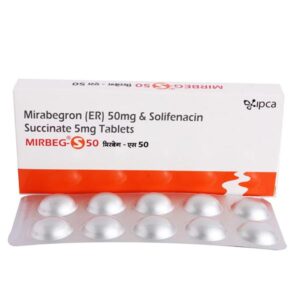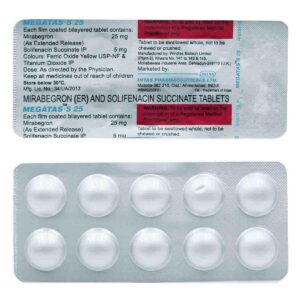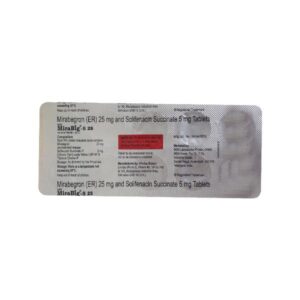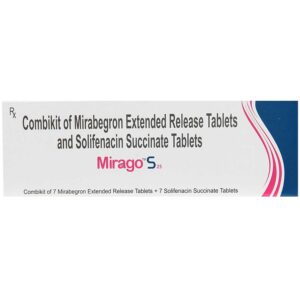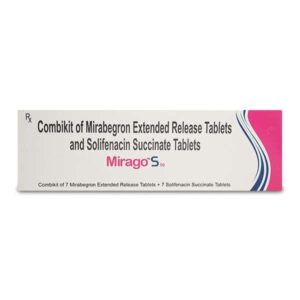SOLIFENACIN + MIRABEGRON
Solifenacin: Solifenacin is a medication commonly prescribed for the treatment of overactive bladder (OAB) symptoms, including urgency, frequency, and urge incontinence. It is sold under the brand name Vesicare.
The drug belongs to a class of medications known as antimuscarinics or anticholinergics. It works by blocking a certain type of receptor in the muscles of the bladder, called the muscarinic receptors. By doing so, solifenacin helps relax the bladder muscles, reducing involuntary contractions and thereby reducing the frequency and urgency to urinate.
The usual starting dose for solifenacin is 5 mg per day. Depending on the individual’s response, the dose can be increased to 10 mg per day. The medication is available in tablet form and should be taken orally with or without food. It is important to follow the prescribed dosage and instructions provided by the healthcare provider.
As with any medication, solifenacin can cause side effects. Common side effects include dry mouth, constipation, blurred vision, difficulty urinating, and abdominal pain. These side effects are usually mild and temporary. However, if they persist or worsen, it is recommended to consult a healthcare professional. In rare cases, solifenacin may cause more severe side effects such as allergic reactions, irregular heartbeat, or difficulty breathing. It is important to seek immediate medical attention if any severe side effects occur.
It is worth noting that solifenacin may interact with certain medications and medical conditions. It is important to inform the healthcare provider about any other medications, allergies, or medical conditions before starting solifenacin to avoid potential interactions or complications.
Overall, solifenacin is an effective medication for managing overactive bladder symptoms. It helps to relieve the symptoms of urgency, frequency, and urge incontinence by relaxing the bladder muscles. However, it is essential to follow the recommended dosage and discuss any concerns or side effects with a healthcare provider.
Mirabegron: Mirabegron is a medication used to treat overactive bladder (OAB) symptoms such as frequent urination, urgency, and urinary incontinence. It works by relaxing the smooth muscles of the bladder, increasing the bladder’s storage capacity and reducing the urge to urinate.
The main mechanism of action of Mirabegron is the activation of beta-3 adrenergic receptors in the detrusor muscle of the bladder. When activated, these receptors cause relaxation of the muscle, allowing the bladder to expand and store more urine. This action helps to reduce the symptoms of OAB.
The usual recommended dose of Mirabegron is 25 mg once daily. However, in some cases, the dose may be increased to 50 mg per day if needed. It is important to follow the dosage instructions provided by the healthcare professional.
Like any medication, Mirabegron can cause side effects. Some common side effects include increased blood pressure, headache, dizziness, constipation, diarrhea, dry mouth, and urinary tract infection. It is important to consult a healthcare professional if these side effects persist or become bothersome.
Mirabegron may not be suitable for everyone, and it is important to inform the prescribing doctor about any existing medical conditions or other medications being taken. It is especially important to disclose any history of hypertension or liver disease, as well as any medications being taken for these conditions.
In conclusion, Mirabegron is a medication used for the treatment of overactive bladder symptoms. It works by relaxing the smooth muscles of the bladder, increasing its storage capacity. It is generally well-tolerated, but like any medication, it can cause side effects. Consulting a healthcare professional is essential for accurate dosing and monitoring for any potential adverse effects.

